GwinnettForum | Number 21.48 | June 25, 2021
SUMMERTIME BRINGS CAMP TIME and it’s camp time at the Southeastern Rail Museum in Duluth. These young campers are eager to learn more about trains, and you can, too. See Calendar below for more details.
TODAY’S FOCUS: Here’s a solution to the national student loan program
EEB PERSPECTIVE: New York’s use of ranked choice voting is major system test
ANOTHER VIEW: Looking at nation’s inflation: it might be worth it
SPOTLIGHT: The Gwinnett Stripers
FEEDBACK: Remembering Hill Jordan and a key message he had for an audience
UPCOMING: Duluth rail museum fund drive is gathering steam
NOTABLE: Building Babies Brains wins $75,000 transformation grant
OBITUARIES: Jim Steele
RECOMMENDED: Death in Venice and Other Tales by Thomas Mann
GEORGIA TIDBIT: UGA women’s swimming team is a top winner in NCAA finals
MYSTERY PHOTO: Stately house is this issue’s Mystery Photo
CALENDAR: Start assembling hazardous waste for July 22 recycling
Here’s a solution to the national student loan program
(Editor’s Note: this is the third and final article on the nation’s student loan debt. It is an opinion article by the former chief operating officer of the Office of Federal Student Aid, U.S. Department of Education, under the Trump Administration.)–eeb
By Wayne Johnson
MACON, Ga. | Based upon what we are currently seeing in Washington, the citizens of the United States are about to witness a Federal Government personal loan bailout that will be greater than any corporate loan bailout ever made.
In fact, it will amount to the single most significant negative financial markets event in the history of the United States. It is very possible that before the end of this year that our government will cancel out more than a trillion dollars of Federal Student loans.
This occurrence will be heralded by “progressives” as being great for economic stimulation and the “unshackling” of the burdens of the great American nightmare of student loan debt. However, the reality is that three out of five Americans will be paying the tax bill for the other two Americans who racked up the debt.
Most disheartening is that unless there is a total revamping of the way in which post-secondary education financing is funded by the Federal Government, this same negative economic event will re-occur in about seven years.
The greatest beneficiaries of an educated and skilled American workforce are corporations, both for-profit and nonprofit. These entities often say that their greatest assets are the trained and educated people of their organizations. Realize that these corporations set forth the educational requirements for employment. The absurdity, however, is that these entities get their greatest assets for free, the skills training of their workforce, since everyday working taxpayers will be paying for the student’s education in getting these skills.
Would it not make better sense that the educational skills training should be paid by those organizations that dictate the requirements for the worker’s education attainment?
How? Pass a tax on corporate America’s top-line revenue of one percent. That would generate more than $240 billion per year! This would be enough money to cover the $140 billion per year in higher education costs, with the remainder $100 billion per year serving to retire previous federal loan national debt borrowings. Do the numbers and you’ll see.
Of significant importance is that this financing mechanism of taxing corporations specifically for education purposes would allow the United States to cancel out student loans forever. They could instead disburse the $140 billion per year in the form of education grants, instead of loans.
What it all boils down to is whether individual taxpayers will continue to pay for the education requirement dictates of corporate America, or will corporate America pay for the skilled and educated workforce it needs.
The time has come to demand that a Corporate America Workforce Development Tax on top-line revenue be put in place. That way, we can return to a full expectation that the Great American Dream can be achieved by our workforce by way of higher education.
It is important to note that the proposed tax is on top-line revenue and not a tax on adjusted profits. This will ensure that all corporations pay, in fact, and do not get away with tax deduction loopholes.
Our country needs this major change. Talk to your legislators!
- Have a comment? Send to: elliott@brack.net
New York’s use of ranked choice voting is major system test
By Elliott Brack
Editor and Publisher, GwinnettForum
JUNE 25, 2021 | There were major political results in New York City this week, as citizens there held a primary to determine who will be the Democratic candidate for mayor. Weak Republican influence in New York points to the eventual Democratic winner as the next mayor. The mayor will officially be decided in their General Election in November.
![]() The New York election is important for a new reason: Tuesday’s primary was the first with the city using “ranked choice voting.” Such a system is innovative. Its best feature is that it eliminates the election having to resort to a second vote, a runoff, to determine the winner. However, it may take two weeks, until all absentee ballots are in and counted, to find out who is to be the Democratic nominee for the post.
The New York election is important for a new reason: Tuesday’s primary was the first with the city using “ranked choice voting.” Such a system is innovative. Its best feature is that it eliminates the election having to resort to a second vote, a runoff, to determine the winner. However, it may take two weeks, until all absentee ballots are in and counted, to find out who is to be the Democratic nominee for the post.
The ranked-choice tabulation only kicks in if no candidate gets 50 percent (plus one vote) in the election. (The leading candidate got 31 percent of the vote.) With 13 people seeking to win the New York mayorship, it was almost certain that no candidate would get 50 per cent of the vote, so ranked-choice is being used to pick the winner. (Ranked choice tabulations are computer-controlled and complicated; it may take several more tabulations or rankings to determine the winner.)
In a traditional two-person race, ranked-choice has no application. But in a primary such as in New York with 13 candidates, or similarly, in Georgia last year for the remainder of the term for the Isakson Senate seat, it eliminates a costly runoff.
Here’s how the ranked choice works. Voters don’t just vote for a single person. They rank their top five choices for the office. When ranked choice counting reveals no majority winner, counting begins anew. The candidate in last place is eliminated. All ballots cast for that eliminated candidate are then reallocated to the No. 2 choices of those voters. The votes are then re-tallied and the candidate in last place is eliminated again. The process repeats until there are two candidates left, and the one with more votes wins.
The major benefit, besides elimination of a runoff, is that the winner comes from support of a broad cross section of the voters. Candidates must therefore appeal to this larger audience, instead of relying on a narrow base of voters.
It also allows the people to vote (“support”) more than one candidate, basically selecting their choices in order according to which candidates appeal to them. Most voters often like more than one candidate, and this allows them to show that support, in ranking their top choice. By ranking, you can still have a voice in choosing the winner, though your top candidates may not be in the running.
The states of Maine and Alaska have used ranked choice voting, and some cities, including San Francisco and Minneapolis, have adopted this system. This year Salt Lake City and 22 other Utah cities will use ranked choice voting in the city elections in the fall.
Ranked choice is relatively new. But it’s been working in Australia, Ireland, New Zealand, Malta, Northern Ireland, and Scotland. We’ll see if more of the United States considers this method of election.
The New York City primary voting was the largest single use of the ranked choice system. It could prove useful to be an effort which could be extended to other cities and states to improve elections.
- Have a comment? Send to: elliott@brack.net
Looking at nation’s inflation: it might be worth it
(Editor’s Note: the following comes from a certified public accountant who retired from the firm of DeLoitte and Touche.—eeb)
By Michael Wood
PEACHTREE CORNERS, Ga. | You can’t miss hearing about inflation in today’s news. A monthly uptick from under two percent to five percent annual rate in May rattled the stock market and elicited calming comments from the Federal Reserve. America has seen inflation before, but where does it come from and what does it imply?
Much recent inflation arises from economic dislocations related to business slowdowns or accelerations caused by the Covid pandemic. Travel and hospitality experienced catastrophic slowdowns and even shutdowns. Hotels closed, air travel tanked, car rentals cratered, and car rental businesses sold off major portions of their idle fleets. Restaurants had a hard hit; many closing for good, and the rest struggling to hang on. However, grocery stores and online businesses like Amazon experienced large, profitable increases in demand.
As pandemic restrictions relaxed, travel and entertainment sectors came back online often charging premium prices because, in part, to extraordinarily high demand and, in part from higher wages needed to lure workers back to jobs in this sector.
Demand and higher costs arise in reaction to pandemic dislocations, and both cause inflation. These dislocations should relax over time; some may not. Those that do not relax will lead to longer term inflation, which may seem bad. However, on-going inflation may have beneficial effects.
Let’s say that higher wages, particularly for low-wage employees, stay in place. These employees could afford a higher standard of living, actually raising some above the poverty line. Most will spend all of their higher incomes. That cost-push inflation actually expands the economy, but causes only small, negative effects to consumers, while significantly benefiting lower wage employees long-term. Perhaps that kind of inflation is worth it.
- Have a comment? Send to: elliott@brack.net
The Gwinnett Stripers
 The public spiritedness of our sponsors allows us to bring GwinnettForum.com to you at no cost to readers. The Gwinnett Stripers, Triple-A affiliate of the Atlanta Braves, play at Coolray Field in Lawrenceville, Ga. Tickets for all Stripers home games, which are back to 100 percent capacity, are on sale now at GoStripers.com. The team’s next home stand will be July6-11 vs. Nashville. Follow the Stripers on Facebook, Twitter, and Instagram at GoStripers.
The public spiritedness of our sponsors allows us to bring GwinnettForum.com to you at no cost to readers. The Gwinnett Stripers, Triple-A affiliate of the Atlanta Braves, play at Coolray Field in Lawrenceville, Ga. Tickets for all Stripers home games, which are back to 100 percent capacity, are on sale now at GoStripers.com. The team’s next home stand will be July6-11 vs. Nashville. Follow the Stripers on Facebook, Twitter, and Instagram at GoStripers.
- Visit their website: ttps://www.milb.com/gwinnett
- For a list of other sponsors of this forum, click here.
Remembering Hill Jordan and a key message he had
Editor, the Forum:
![]() It’s saddening to hear of the death of a long-time friend, Hill Jordan. Although we grew up a few miles apart, we knew each other from school and sports, and this carried on into our adult lives. Hill was a fun-loving guy who had his passions. As noted, he had a great interest in anything to do with life-saving efforts and personal involvement in that field.
It’s saddening to hear of the death of a long-time friend, Hill Jordan. Although we grew up a few miles apart, we knew each other from school and sports, and this carried on into our adult lives. Hill was a fun-loving guy who had his passions. As noted, he had a great interest in anything to do with life-saving efforts and personal involvement in that field.
At one time, he was speaking to various groups about how to help save lives. He told me once of such a time, when he was speaking to a group and as was his nature, he dramatized the scene. He faked a heart attack during the meal, grasping his chest and falling over into his plate of food.
For a while, the members of the audience completely froze, as no one moved a muscle for several minutes, while Hill was slumped over with his face in his mashed potatoes. Finally, someone had the presence of mind to call 911.
By that time, Hill had gotten his message across, which was the message he intended. Rest in peace, friend. You left it better than you found it.
— Charles Summerour, Duluth
Let grandchildren pay for infrastructure debt; they’ll be using it
Editor, the Forum:
Maybe you should have your businessman friend read this column by Paul Krugman in the June 22 edition of The New York Times about how the case for fearing runaway inflation has collapsed over the past few weeks.
Oh, I forgot: most Republicans believe Krugman is a Communist. Repeating what he said about taxes fits right in with what we always believe. How long have we been told that the national debt was going to sink us? I have heard it all my life and now it still hasn’t. It’s like saying our grandchildren will have to pay for any infrastructure debt we incur. Well, why shouldn’t they help pay for it? They will be using it. Get real.
— Hoyt Tuggle, Buford
There’s something to the way a name can be pronounced!
Editor, the Forum:
Love the opening quote from Joe Thiesmann…whose name…as you may know…was originally pronounced THEESE man…but the folks at Notre Dame thought it wise (and it was) to rhyme it with Heisman.
— Howard Hoffman, Berkeley Lake
- Send us your thoughts: We encourage you to send us your letters and thoughts on issues raised in GwinnettForum. Please limit comments to 300 words, and include your hometown. The views of letters are the opinion of the contributor. We reserve the right to edit for clarity and length. Send feedback and letters to: elliott@brack.net.
Duluth rail museum fund drive is gathering steam
The Fast Track to the Future campaign to benefit the Southeastern Railway Museum (SRM) has announced that Dan Adkins and Mark Williams will co-chair the initiative’s Advanced Division fundraising campaign. It seeks to raise $1 million over five years to expand and enhance Georgia’s Official Transportation History Museum located in Duluth.
 The Advanced Division will contact organizations that are projected to make the largest financial commitments to the five-year program. The Friends and Family division raised the initial $300,000+. Over the next five years, through the Fast Track to the Future program, SRM will:
The Advanced Division will contact organizations that are projected to make the largest financial commitments to the five-year program. The Friends and Family division raised the initial $300,000+. Over the next five years, through the Fast Track to the Future program, SRM will:
- Enhance the educational experience: SRM will develop a classroom at the Museum to host elementary, middle school and high school classes visiting SRM to study transportation.
- Improve and expand museum exhibits: SRM will redevelop and revitalize the Museum’s collection of historic railway locomotives and cars to enhance the visitors’ experience.
- Modernize the museum for growth: SRM will develop a new Master Site Plan to better portray the impact of transportation on our country; make the Museum grounds more visitor friendly while improving safety and security.
- Expand professional staff: SRM will recruit a fulltime professional Executive Director to implement the dynamic Fast Track to the Future program.
Building Babies Brains wins $75,000 transformation grant
Gwinnett Building Babies’ Brains has received a Community Transformation Grant of $75,000 from the Georgia Department of Early Care and Learning (DECAL) to increase access to high-quality early learning programs in Gwinnett County.
Gwinnett Building Babies’ Brains is a community collective of over 50 organizations and individuals focused around the goal of ensuring that all children in Gwinnett will be ready to thrive in kindergarten. Together the groups will collaborate to develop a specific project, Gwinnett Building Babies’ Brains in All Languages and Cultures, built around increasing access to high-quality early childhood programs for infants and toddlers and ensuring they are delivered in a culturally responsive manner and locally available to families in under-resourced areas of Gwinnett County.
Gwinnett Building Babies’ Brains is one of eight local collaboratives to receive a Community Transformation Grant. The recipients were selected from a group of 34 partnerships that participated in a rigorous application process. The applicants, representing communities around the state, first submitted detailed Letters of Interest (LOIs) describing their experience and capabilities, their identified community need, and the project they planned to develop in response to that need. Each LOI was reviewed and scored, with the 20 projects receiving the highest scores invited to submit formal applications.
- Have a comment? Send to: elliott@brack.net
Jim Steele
The former chief operating officer of the Gwinnett County Public Schools, Jim Steele, died June 21 in Toccoa at the age of 73 from the maladies of prostate cancer. At his own request, there will be no funeral, because, as he stated: “Funerals were too sad and morbid.” His body will be cremated and his ashes will be scattered on a new road he had just seen finished on his farm in Toccoa.
Besides his official duties, Mr. Steele was heavily involved with the local community, as well as in state and national activities.
Leonard James Steele grew up in Toccoa, where his father was a veterinarian, making numerous visits to farms to see his father doctor sick animals. From this grew a lifetime of appreciation of farm life. In his retirement, he raised a herd of Simmental Angus cattle and attempted to restore his grandfather’s farm. He also did consulting work with St. Bourke, a development company out of Australia, regarding projected development in the north end of Gwinnett.
After attending North Georgia College, he graduated from the University of Georgia, and immediately went into construction for six years, managing complex construction sites, at one time overseeing 10-15 ongoing projects. Mr. Steele joined the Gwinnett County Public Schools in 1976, in facility planning and construction. Eventually he became COO of the system, headed building, ground and fleet maintenance, public safety, environmental and supply, risk management, contract engineering, continuous quality improvement and transportation. Among his accolades, he guided his division in earning the prestigious Malcolm Baldridge-based “Georgia Oglethorpe Award for performance excellence.” The District’s Facilities and Operations complex on Gwinnett Drive in Lawrenceville was named for him earlier this year.
Meanwhile, he was responsible for building new schools for the growing Gwinnett system, more than anyone in the country, a total of 97during his 38 years with the system. His buildings came in on time and under budget, and were built with efficient maintenance operations in mind.
Amid his other duties, he started the School Resource Officer program, first becoming a deputy sheriff in Gwinnett County “to learn more about policing,” as he said. He was past president of the Georgia Police Chiefs Association.
He taught classes for 20 years on contract law to the Georgia Superintendent’s Institute and also had a 50 hour session on facilities and operations. He was also a keynote speaker for national and state groups.
The current school superintendent, Alvin Wilbanks, said of him: “Jim Steele was a colleague and friend who enjoyed his job, was very successful, and made a positive difference in his areas of Facilities and Operations. His leadership and influence was felt throughout the State and his work set the benchmark for others to follow. I will miss Jim Steele.”
Among Mr. Steele’s many other local activities:
- Public Service Award winner in 1976 of Gwinnett Chamber of Commerce.
- Charter board member and for more than 20 years president of Gwinnett Clean and Beautiful. Keep America Beautiful awarded its top national award to Jim: the Iron Eyes Cody Award.
- Charter class of the Institute of Georgia Environmental Leadership.
- Graduate of Leadership Gwinnett.
- Member of the Eastside Hospital Board of Directors for 20 years.
- Long-time member and former president of Gwinnett Rotary Club and a Paul Harris Fellow.
- A director who helped plan the J.M. Tull YMCA.
Jim Steele met his wife, Adele, a native of Vermont and a school counselor, when he was supervising the first addition to Berkmar High School. They had been married for 46 years.
Besides his wife, leaves behind a family which includes his sister, Patty Kleinert of Alto; a brother, Charles Steele of Toccoa; and a son, Capt. Jimmy Galbreath of Mountain City.
The Jim Steele Environmental Education Scholarship Fund at the Community Foundation for Northeast Georgia has been created in honor of Jim’s passion for education, love of the environment and commitment to making a difference. Donations may be made to www.CFNEG.org, The Community Foundation for Northeast Georgia, 6500 Sugarloaf Parkway, Suite 220, Duluth, Ga. 30097 with J. Steele EE Scholarship in the memo line.
- Check out this five-minute video, Jim Steele: Built to Last, that Gwinnett County Public Schools published when he retired about Jim’s legacy in the community.
Death in Venice and Other Tales by Thomas Mann
![]() German author Thomas Mann won the Nobel Prize for fiction in 1929. He was acclaimed as a great Weimar Republic author when only 26, with his earlier book, Buddenbrooks. His writing focuses on the burghers, artists and Hanseatic bourgeoisie along the Baltic shores, capturing in detail their manner and customs. He reads like a much more modern writer, only cleaner, with no foul language. Follow this introduction of The Wunderkind story: ‘The wunderkind comes in, the hall hushes. It hushes and then the people begin to applaud, because somewhere off to the side, a bellwether and born leader is the first to clap. They have heard nothing as yet, but they are expressing their acclaim; for a tremendous promotional apparatus has paved the way for the wunderkind, and the people are already beguiled, whether they know it or not.’ —eeb
German author Thomas Mann won the Nobel Prize for fiction in 1929. He was acclaimed as a great Weimar Republic author when only 26, with his earlier book, Buddenbrooks. His writing focuses on the burghers, artists and Hanseatic bourgeoisie along the Baltic shores, capturing in detail their manner and customs. He reads like a much more modern writer, only cleaner, with no foul language. Follow this introduction of The Wunderkind story: ‘The wunderkind comes in, the hall hushes. It hushes and then the people begin to applaud, because somewhere off to the side, a bellwether and born leader is the first to clap. They have heard nothing as yet, but they are expressing their acclaim; for a tremendous promotional apparatus has paved the way for the wunderkind, and the people are already beguiled, whether they know it or not.’ —eeb
- An invitation: what books, restaurants, movies or web sites have you enjoyed recently? Send us your recent selection, along with a short paragraph (150 words) as to why you liked this, plus what you plan to visit or read next. Send to: elliott@brack.net
UGA women’s swimming team is a top winner in NCAA finals
(Continued from previous edition)
The University of Georgia (UGA) swim program was founded in 1926 by Athens YMCA athletic director C. W. Jones. In the 1990s the team became a consistent top finisher in the Southeastern Conference (SEC) and a competitive power in the National Collegiate Athletic Association (NCAA) championships. As of 2005, the men’s team has finished in the top 15 in the country every year since 1996; the women’s team began placing in the top five in 1996 and has won first or second at the NCAA championships every season since 1999.
 In 1974 several UGA women approached Martha Washington about forming a women’s team. Washington coached the team until 1977, when Joe McEvoy became head coach for the next two seasons. In 1979 Jack Bauerle, who had been a four-year letterman on UGA’s men’s team, became the women’s coach, and in 1983 he began coaching the men’s team as well.
In 1974 several UGA women approached Martha Washington about forming a women’s team. Washington coached the team until 1977, when Joe McEvoy became head coach for the next two seasons. In 1979 Jack Bauerle, who had been a four-year letterman on UGA’s men’s team, became the women’s coach, and in 1983 he began coaching the men’s team as well.
The women’s team finished 22nd at the NCAA championships in 1983, the first year that they competed in the meet, and in 1986 they broke into the top ten for the first time, finishing ninth. The team won three consecutive NCAA titles beginning in 1999 and placed second in 2002 and 2003, breaking four American records at the 2002 NCAA championships. At the 2003 NCAA meet, senior Maritza Correia broke the American record in the 100-yard freestyle and won her eleventh NCAA championship, the most of any female UGA swimmer. The UGA women’s team won a fourth NCAA championship in 2005.
UGA student Sheila Taormina won a gold medal as a member of the 800-meter freestyle relay team in the 1996 Olympic Games in Atlanta. In the Sydney Olympics of 2000, UGA athletes won three medals for swimming. Courtney Shealy, three-time NCAA champion, won gold medals in the freestyle and 4×100 medley relays, and Kristy Kowal won a silver medal in the 200-meter breaststroke.
As of 2005, UGA diving coach Dan Laak, who arrived at UGA in 1987, has coached eight all-Americans, including Jud Campbell, who placed second in the one-meter platform at the 2001 NCAA championships. Campbell also became UGA’s first SEC diving champion since 1967, winning the one-meter platform for three years in a row (1998-2000).
- To view the Georgia Encyclopedia article online, go to http://georgiaencyclopedia.org
Stately home is this issue’s Mystery Photo
Here’s a stately home, one you might recognize. Figure out where this issue’s Mystery Photo is, and send your answer to elliott@brack.net to include your hometown.
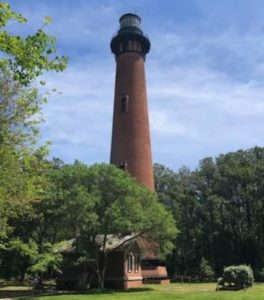 Lynn Naylor, Norcross: was first in with the correct answer to the last Mystery Photo: “Here’s my guess for today’s mystery pix….sure looks like the Currituck Beach Lighthouse in North Carolina’s Outer Banks. Here’s what I found about this particular lighthouse: it’s located in the heart of Corolla, borders the historic Whalehead in Historic Corolla and still functions as a guide for passing mariners. At 162′ feet tall, the lighthouse’s First Order Fresnel light, (the largest size available for American lighthouses), can be seen for 18 nautical miles as the light rotates in 20 second increments.” The photo came from Donna Clemmer Carpenter of Dallas, N.C., via Susan McBrayer of Sugar Hill.
Lynn Naylor, Norcross: was first in with the correct answer to the last Mystery Photo: “Here’s my guess for today’s mystery pix….sure looks like the Currituck Beach Lighthouse in North Carolina’s Outer Banks. Here’s what I found about this particular lighthouse: it’s located in the heart of Corolla, borders the historic Whalehead in Historic Corolla and still functions as a guide for passing mariners. At 162′ feet tall, the lighthouse’s First Order Fresnel light, (the largest size available for American lighthouses), can be seen for 18 nautical miles as the light rotates in 20 second increments.” The photo came from Donna Clemmer Carpenter of Dallas, N.C., via Susan McBrayer of Sugar Hill.
Dacula City Councilwoman Ann Mitchell wrote: “I recognized the lighthouse instantly as we just visited there in April. A very beautiful place that I want to visit again soon. Attached is a picture of my husband, Dennis, and I standing in front of the lighthouse.”
Bob Forman of Grayson said that is the lighthouse “….at Currituck Beach at the village of Corolla (pronounced Kor- all- a), North Carolina. We visited there some years ago and saw the wild horses on the beach north of Corolla. The paved road ends at Corolla. The Outer Banks is a great place to vacation with family.”
Others recognizing it include Lou Camerio, Lilburn; Gloria James, Lawrenceville; and Allan Peel of San Antonio, Tex., adding: “Construction began on the Currituck Beach Lighthouse in 1872, and began providing a guiding light to passing ships just three years later on December 1, 1875. As is visible in the mystery photo, a small, Victorian style lighthouse keepers’ home was built in 1876, providing housing for the principal keeper’s family and two assistants’ families. The lighthouse was electrified in 1933, and the keeper’s positions were discontinued in 1937. The current First Order Fresnel light is the largest size available for American lighthouses and was installed in 1939. It can be reached after climbing 220 steps from the base of the lighthouse to the lens at the top.”
Duluth’s Southeastern Railway Museum is now open after the pandemic, and plans several activities. Session No. 2 of the Summer Rail Camp will be July 12-16. Railroad Speeder Days are July 17-18; Antique Typewriter Showcase is July 24; and Trains, Trucks and Tractors are August 6-8. For further information on these events, visit the museum’s website at www.train-museum.org or contact Sue Kelly, the museum’s Interim Executive Director at volunteer@train-museum.com or 770-476-2013 .
If you have hazardous waste around your home, you can get rid of these materials at Gwinnett Clean and Beautiful and the Gwinnett Department of Water Resources Collection Day on July 22. It will be held from 4-8 p.m. at the Gwinnett County Fairgrounds in Lawrenceville. The two organizations will accept items that aren’t collected curbside and could prove harmful to the environment like pesticides, antifreeze, spray paint, auto batteries and more for proper disposal or recycling. To learn more, visit www.GwinnettCB.org.
- Have a comment? Send to: elliott@brack.net
GwinnettForum is provided to you at no charge every Tuesday and Friday.
Meet our team
- Editor and publisher: Elliott Brack, 770-840-1003
- Managing editor: Betsy Brack
- Roving photographer: Frank Sharp
- Contributing columnist: Jack Bernard
- Contributing columnist: Debra Houston
- Contributing columnist: George Wilson
More
- Mailing address: P.O. Box 1365, Norcross, Ga. 30091.
- Work with us: If you would like to serve as an underwriter, click here to learn more.
Subscriptions to GwinnettForum are free.
- Click to subscribe.
- Unsubscribe. We hope you’ll keep receiving the great news and information from GwinnettForum, but if you need to unsubscribe, go to this page and unsubscribe in the appropriate box.
© 2021, Gwinnett Forum.com. Gwinnett Forum is an online community commentary for exploring pragmatic and sensible social, political and economic approaches to improve life in Gwinnett County, Ga. USA.



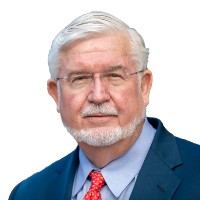

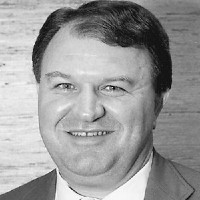
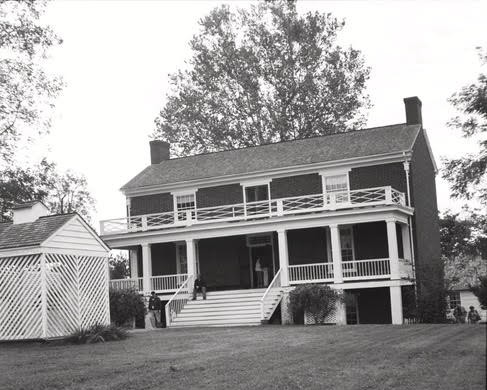
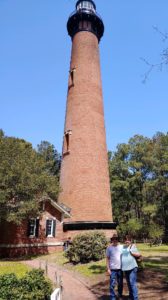








Follow Us